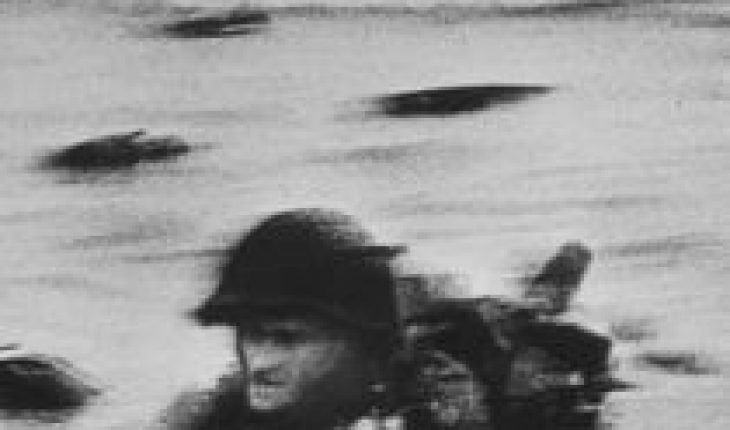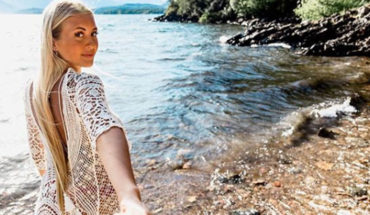
The images are blurry, a little out of focus. And yet the eleven photographs That Robert Capa took on June 6, 1944, the so-called D-Day, on Normandy Beach, secured his reputation as the most famous war photographer. Even 75 years after the end of World War II, they are still among the images that are remembered around the world. Capa was the only photojournalist to land with American soldiers during the invasion. Other photos, such as “Man at Sea” (see above), show soldiers lying up to their necks in the water or getting safe. A bold and courageous operation, but also questioned the origin of the photographs and, therefore, Capa’s reputation as a war photographer.
“If a photo isn’t good enough it’s because you weren’t close enough”
Capa’s career began during the Spanish Civil War (1936–39), when he photographed the struggle of republican troops against Hitler’s ally, General Francisco Franco. Together with his German colleague Gerda Taro he established a new style of graphic reporting using small portable cameras to get closer to the fights. From Capa comes the famous phrase: “If a photo isn’t good enough it’s because you weren’t close enough.” Taro died while working in Spain in 1937.
Friends since the Spanish Civil War: Capa (left) and Ernest Hemingway (right) on their way with U.S. troops in France in July 1944.
Robert Capa, born in Budapest in 1913, had to flee the National Socialists because he was Jewish. He went from Berlin to Paris, and from there traveled repeatedly to Spain for his work. In 1939 he entered the U.S. on a visitor visa. There he was able to use his good contacts with journalists, photographers and authors to get a job. Robert Capa, who had acquired this alias during his Parisian exile, and whose real name was Endre Friedmann, was not the only war photographer of World War II. But it was considered, even within Allied troops, particularly brave and ambitious. In his book “Slightly Out of Focus,” he reports on his work in World War II, but also about his fear and motivation. Capa wanted exclusive photos, and wanted to be there as a reporter during the Allied invasion. The U.S. Army agreed to be part of the small circle of D-Day reporters, even though he was a Hungarian citizen of a country allied with Nazi Germany.
From “Omaha Beach” to New York
On D-Day it was not only important to the 30-year-old Capa because he wanted to survive his mission. He also had to meet the publisher’s deadline. The negatives had to be transported from the French coast, across the English Channel, to London. There they were revealed, and the military censor had to give his go-ahead. A plane was ready to carry the negatives across the Atlantic on time, so that they could reach the American magazine Life, for which Capa worked.
Robert Capa in the Indochina War, 1954.
After the invasion of Normandy, Capa was inside a military jeep on 25 August 1944 during the liberation of his beloved Paris. In March 1945, near the German city of Wesel, he jumped behind enemy German lines along with American paratroopers. Capa didn’t photograph the Battle of Berlin. “There was another story Capa wanted to photograph: the liberation of Leipzig,” Alex Kershaw writes in his Layer biography “Blood and Champagne – The Life and Times of Robert Capa.”
Love Affair with Ingrid Bergman
Capa did not arrive in Berlin until after the end of the war, in the summer of 1945, and took photographs of the liberated city and its people. He was accompanied by Swedish Hollywood star Ingrid Bergman. His love affair began in the destroyed Berlin and ended in early 1947.
From 9 September 2020, an exhibition in Berlin will show numerous photos of Capa’s photographs from the summer of 1945.
After World War II, Robert Capa founded the Magnum photo agency along with photographers Henri Cartier-Bresson, David Seymour (Chim) and George Rodger, who is still considered one of the most renowned. Capa also photographed two other wars: the First Arab-Israeli War, after the founding of the state of Israel, in 1948, a work that was very important to him, and the Indochina War (1946-1954).
On 25 May 1954, Capa accompanied a French unit in an action against the Communist Vietnamese soldiers. He walked a little out of the way, stepped on a mine and was mortally wounded. It is said that even in his death he had clinged to his chamber. If biographer Kershaw had a chance to meet Capa today, he would have two questions: “Was it worth the risk of dying at 40?” And “how come Ingrid Bergman is madly in love with you?”





